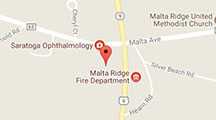According to new blood pressure definitions, worse hypertension is strongly tied to an increased risk of retinal vein occlusion (RVO), though the risk of retinal artery occlusion appears to be unaffected. Source: AAO
A dedicated, resident-centric chalazion incision and drainage clinic can be a boon to ophthalmology training, giving residents self-confidence in performing a specialized surgical procedure. Source: AAO
Ophthamology residents respond positively to whiteboard animation, high triglyceride levels are linked to incident glaucoma, and diabetic retinopathy prevalence in the US shows no signs of abatement. Source: AAO
The relative risk of developing retinal vein occlusion (RVO) after COVID-19 vaccination appears to be no different than that seen after influenza or Tdap vaccination. Source: AAO
There are currently few published clinical trials related to facial hyperpigmentation. Sunscreen may be used to help prevent this condition, while prescription creams can be used to treat it. Source: AAO
Repairing retinal detachment within 2 days of onset achieves significantly better visual outcomes than waiting up to 3 days, but benefits wane after that. Source: AAO
It is important to identify amblyopia at a young age. The new blinq pediatric vision screener is designed to directly detect amblyopia and strabismus, rather than just amblyopia risk factors. Source: AAO
Smartphone-based fundus images could be used to detect retinopathy of prematurity, more ophthalmology residency programs have Instagram accounts, and atropine drops show good results in slowing myopia progression. Source: AAO
In order to detect glaucoma progression before significant vision loss occurs, it is important to conduct regular visual field testing, but little is known on how frequently testing needs to be performed. Source: AAO
For retinopathy of prematurity (ROP), treating with high-dose bevacizumab vs low-dose bevacizumab or any dose of ranibizumab may mean a lower rate of retreatment. Source: AAO



